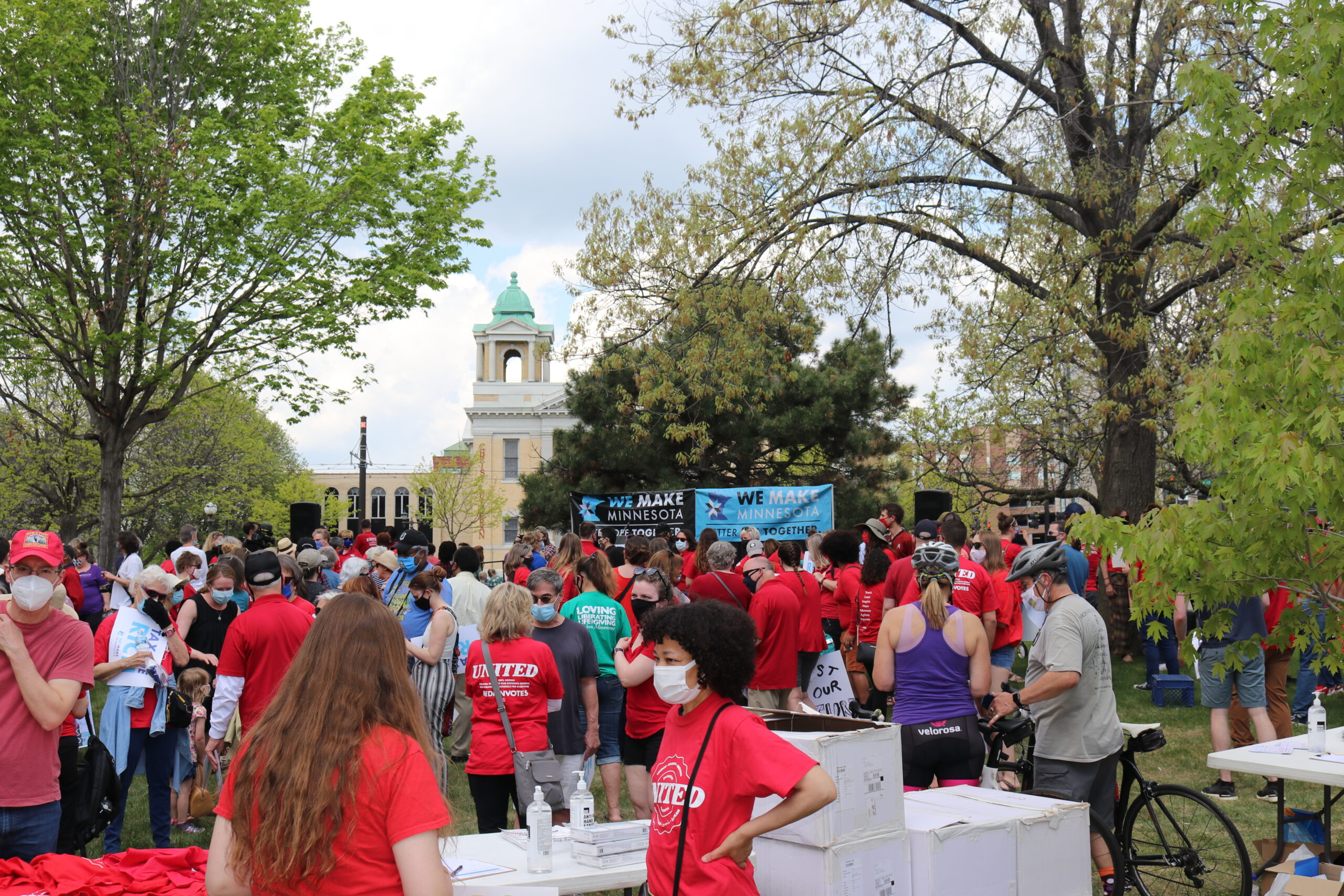
Gov. Tim Walz and the Minnesota Legislature approved an education budget that includes the largest single increase in the per-pupil formula in 15 years, a meaningful step toward fully funding our public schools.
The Minnesota Senate passed the budget bill June 30 and the governor signed it hours later. The Minnesota House voted on it June 26. It will increase state funding for preschools through high schools by $554.9 million over the next two years.
The bump in state funding, along with one-time federal money for pandemic recovery, should protect most schools from devastating budget cuts and layoffs.
Public schools will see $462.9 million in new per-pupil aid over the biennium—a 2.45 percent increase the first year and 2 percent in the second.
Educators and parents successfully blocked attempts to include private school vouchers in the deal. But Senate Republicans refused to raise taxes on the wealthiest few and corporations to give students smaller class sizes, more support services and greater access to mental health resources.
Here’s what’s included in the education bill:
- $46.6 million to maintain 4,000 voluntary pre-K spots.
- $16.7 million to help attract and retain more teachers of color.
- $10 million for special education students.
- $4 million for English language learners.
- $1.8 million for non-exclusionary discipline and trauma-informed training to dismantle the school-to-prison pipeline.
Here’s what didn’t make it into the bill:
- Funding for full-service community schools.
- Paid training for education support professionals.
- More money for student support staff.
- Policies to increase worker voice. This means Tier 1 teachers are still prohibited from joining their bargaining unit and mandatory subjects of bargaining were not expanded to include issues like class sizes or staffing.
- Changes to state law allowing hourly school workers to access unemployment if needed during the summer months.
“This budget contains the single largest increase in the per-pupil funding in more than a decade, preserves thousands of pre-K seats and makes a wise, strategic investment in increasing the number of Minnesota’s teachers of color,” Education Minnesota President Denise Specht said in a press release after the bill was passed. “We are disappointed by the lack of certain equity provisions supported by educators, but this budget is a meaningful step toward fully funding public education.”
“This would not have happened without hundreds of educators sharing their stories with legislators about what their students need to succeed,” Specht said, adding that more than 700 educators met with over 100 lawmakers in the 2021 session as part of Education Minnesota’s lobby day program. “Educators live the reality of underfunded schools that have few resources to support student learning. Many shared their fears about what would happen to public schools if hundreds of millions of dollars were siphoned off into vouchers for private schools.”
Even though the education bill did not contain several of Education Minnesota’s funding priorities, thankfully Gov. Walz included many of them in his plans for spending $132 million in federal COVID-19 relief funds. Gov. Tim Walz’s includes many of Education Minnesota’s priorities, including: increased spending on full-service community schools, layers of student support services, mentoring for new teachers, expanding non-exclusionary systems of discipline, and providing training in trauma-informed teaching for teachers and paraprofessionals.
Specifically, the plan includes:
- $66 million for learning recovery, including a particular emphasis on students receiving special education services.
- $26 million in school support, including $23 million in other state activities funds and $3 million in grant administration funds to expand systemic supports for students.
- $13.6 million in state support to build and reinforce systems and structures within MDE to better support students, families and educators.
- $13.2 million for summer enrichment grants, with half of the funds directed to community organizations and half directed to culturally specific community organizations.
- $13.2 for after-school programs, directing funds to Ignite Afterschool and other community organizations.
The Legislature did also create to a $250 million essential workers fund, which is aimed at providing COVID back pay to workers who were on the front lines of the pandemic. As of press time, a legislative work group was appointed and has a charge to bring forward recommendations by Sept. 6 for how the funds should be disbursed. Education Minnesota plans to push for education support professionals who were on the front lines providing in-person child care to be included.
The higher education bill includes:
- $100 million in new money for higher education.
- No tuition freeze and a tuition increase cap of 3.5 percent.
- $1 million for student teacher grants.
- $2 million for underrepresented teachers of color grants.
- $400,000 for the teacher shortage loan repayment program.
- $3 million for aspiring teachers of color scholarships.
There’s also good news for student loan borrowers, essential workers and early learning advocates. State lawmakers passed the following legislation:
- The Student Loan Borrowers Bill of Rights to help regulate loan servicers and protect borrowers from unscrupulous practices that forces many to pay millions of dollars in unnecessary interest.
- The Great Start for All Minnesota Children Task Force, which will look at child care and early learning affordability for families and the workforce challenges that exist. The governor’s Children’s Cabinet is also directed to develop a report on how all early care and learning programs could be consolidated into a single agency.
Senate Republicans had proposed just $152 million in new funding for E-12 education at the beginning of the session, while House Democrats and the governor wanted $722 million and $750 million in new dollars, respectively.
The Legislature finished its regular session May 17 but came back in a special session June 14 to finish the state’s two-year budget.



